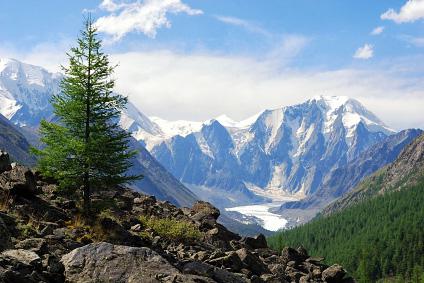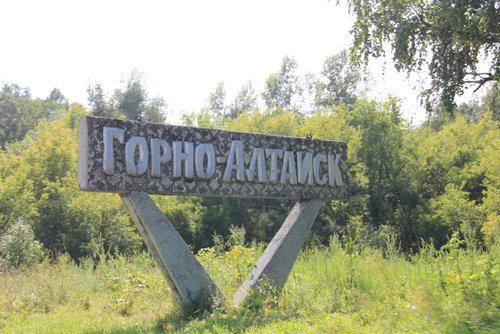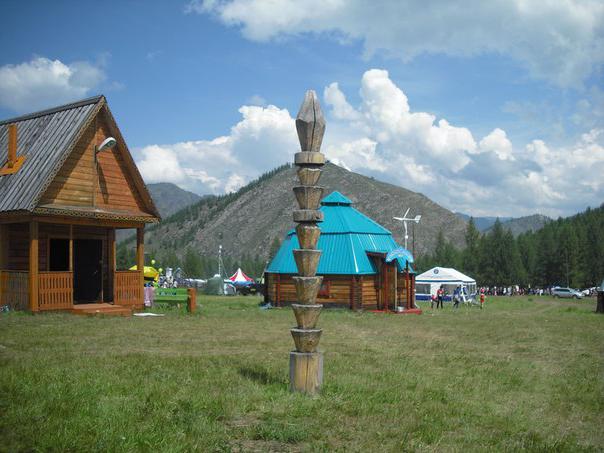Russia is a multinational state, whose regions are represented by territories that are unique in terms of culture, nature, and in many ways - in the aspect of respectful and peaceful coexistence of different peoples. Among these are the Altai Republic. What are the most remarkable stages in the history of the region? What is its economy based on? What are the features of the cultural development of Altai today?
Let us first consider the structure of state power of the Republic. Does it differ fundamentally from models operating in other Russian regions?
Altai Republic: power system
The Government of the Altai Republic, with a narrow interpretation of this term, is one of the authorities that form the state system of this subject of the federation. According to the Constitution of the political unit in question, the wording of which is generally similar to the provisions of the corresponding basic law of the Russian Federation, the key institutions of power here function as part of the division into legislative, executive and judicial branches.
If we interpret the term under study not as an authority, but in a broader sense, that is, as a system of political governance, then it is probably worth noting that the government of the Altai Republic is organized in compliance with the principle of delegating certain powers from the level of a federal subject to the municipal one. As well as in most other regions of Russia.
The highest official in the political management structure of the region is the Head of the Altai Republic. He is elected by direct voting of the population. At the same time, he heads the Government (as an executive authority). It includes various ministries of the Altai Republic. The supreme legislative body of the subject of the federation is the State Assembly. In the language of the indigenous people of the Republic, Altai, it sounds like El-Kurultay. Moreover, the Government is accountable to the State Assembly. The Supreme Court of the Altai Republic is the highest authority in the third branch of government.
Administrative and political structure of the Republic
The administrative and political structure of the region is formed by 10 districts, each of which is divided into municipalities, as well as the capital of the Altai Republic. This system of organization of power is quite similar to the management models implemented in other national republics of the Russian Federation. The capital of the subject is the city of Gorno-Altaysk.
Each of the municipalities forming the administrative and political structure of the Republic has its own Charter, which is mandatory registered by the Government. Heads of the MO are elected by direct vote. The charters of the majority of municipalities include provisions under which the head of the municipal district also heads the executive body of the corresponding territorial entity. At the same time, a variant is possible in which the key political figure of the municipality may be the head of the legislative representative structure. So, for example, in the Shebalinsky district, the person occupying the post of head of this MO is also the chairman of the Council of Deputies. The head of the Ust-Koksinsky district, in turn, heads not only the corresponding representative body, but also the Administration of the Moscow Region. A similar model operates in the Chemal region of the Republic.
Thus, the structure of the political power of this subject of the federation as a whole is similar to the models adopted in other Russian regions. Therefore, having studied its main points, we turn to the study of the national and cultural characteristics of the Republic, which, in turn, are unique in many aspects.
National composition
Among the most multinational regions of Russia is the Republic of Altai. The language of the indigenous population is classified by linguists as Turkic. He, along with Russian, is one of the two official in the subject of the federation. Altai people in the Republic - about 31% of the population. Most, about 60%, are Russians. A noticeable share of the Kazakh ethnic group is about 6%. In addition, a large number of ethnic Ukrainians and Germans live on this land.
Altaians are the indigenous people of the Republic
The history of the Altai Republic is interesting primarily from the point of view of the development of the indigenous ethnic group. Let us consider the main stages of the ethnogenesis of the Altai people, as well as their social and cultural communications with other peoples. In fact, the Altaians are the collective name of several tribes that speak Turkic languages. The largest nationalities are Teleuts, Tubalars, Uryanhayans, Shors, Telengits, as well as an ethnic group, also called as the titular in the Republic - Altaians, but differing from others related to it. There are over a hundred sub-ethnic groups called seoks. Belonging to them is determined, as a rule, by the genealogy of a person. Altai people communicate in different dialects. The language of the indigenous ethnic group of the Republic belongs to the Kyrgyz-Kypchay subgroup of Turkic dialects.
The origin of the Altai
Ethnogenesis of Altai people varies depending on the specific territory of the region. The northern nationalities inhabiting the republic appeared in the process of contacts of the tribes of Samoyed, Ugric, Turkic, as well as Ket origin. The descendants of these ethnic groups are considered tubalars. In turn, in the south there was an interaction between the Turkic and Mongolian tribes. Thus appeared, for example, telengits and teleuts. Due to the fact that the Altai peoples of the north and south have different origins and, due to the lack of large transport routes, did not actively contact each other, for a long time significant differences remained between them in linguistic, cultural, social aspects. And in Soviet times there was a noticeable consolidation of the ethnic group.
However, as some researchers note, many Altai people primarily identify themselves not so much as residents of the region and the titular nation, but as belonging to a specific ethnic group, seok or clan. The second, ethnographers consider, according to the significance of the criterion - language, as well as family and religious traditions, the worldview of their ancestors. Also, the researchers note, for the Altai people, the geographical factor is important, that is, the place of specific residence, the social environment characteristic of it.
Contemporary Indigenous Culture
Particularly active processes, reflecting the growth of a unified national identity of Altai people of different genetic origin, began to occur in the 80s of the last century. Actually, this trend, according to some researchers, largely predetermined the fact that in 1991 the authorities declared this subject state sovereignty within the borders that correspond to the modern Republic of Gorny Altai. The official language of the indigenous ethnic group received official status. National holidays, such as, for example, Independence Day, celebrated on July 3, or the folk festival El Oyyn, were legislated. During the processes reflecting the growth of the Altai national identity, one of the key historical social institutions of the people was restored - the council of tribal elders, or zaisans. Now their role in the social development of the Republic is assessed as extremely important, supplementing the official power structures.

Not the last place in the development of the Altai ethnic group is occupied by migration processes. In different historical periods, the indigenous peoples of the region moved between the mountains and the plain. If during the years of Soviet development, according to some researchers, indigenous peoples could gravitate to resettle in the mountains, now the ethnic group begins to perceive itself as part of a civil society living in cities located on the plain. The capital of the Republic plays a key role in this direction, largely because after the crisis period of the 1990s, there were more or less significant, from an economic point of view, infrastructure resources.
Altaians and Russians
The history of the Altai Republic is also interesting in the aspect of the interaction of the indigenous and Russian peoples. Both ethnic groups coexist on a common territory, traditionally maintaining peace in relations. The cultural life of the Republic is saturated with both national character events and Russian festivities. Some of the holidays of different nations are characterized by close cultural proximity. So, for example, the national holiday Dyylgayak is very similar to the Russian Pancake Week.
According to the researchers, the active interaction of the Altai peoples with the Russians began in the 17th century. Moreover, until about the middle of the 18th century, a significant part of the territory of the modern Republic was part of the Dzungarian Khanate, with which the Russian Empire had not the most friendly relations. This circumstance was, as historians believe, a significant barrier to further contacts of Russians with the indigenous ethnic groups of the region. At the same time, Altai people lived in not the most favorable socio-political conditions. They were surrounded mainly by hostile Mongol and Chinese tribes. As a result, the Altai zaisans - at that time their status in national communities was close to that possessed by the Russian princes - asked the tsar for citizenship. So, on May 2, 1756, Altai territories became part of the Russian Empire. Since the end of the 18th century, the indigenous ethnic groups of the region began to interact especially with Russian compatriots. Residents of the European part of the Empire moving to new territories were attracted, according to researchers, by the prospect of developing arable land. Together with the migrants, ministers of the Russian Orthodox Church, who were engaged in missionary work, came to Altai.
One example of the unity of the Russians and the indigenous people of the region is the anthem of the Altai Republic. It is unique in that it is presented in two versions - in the national language and in Russian. However, his second verse is written only in Altai. Officially, the anthem of the Altai Republic was adopted relatively recently, in 2001. This patriotic song, the researchers believe, largely testifies to the significance and influence of the centuries-old friendship of the two peoples on their joint peaceful and friendly coexistence, as well as on further prospects for the development of the Altai Republic in socio-political and cultural terms.
Capital
Why is the capital of the Altai Republic interesting? Consider the basic facts. Gorno-Altaysk is located in the north-west of the Republic, on the territory of the Maiminsky district municipality. The population of the city is more than 61 thousand people. The official history of Gorno-Altaysk, according to some researchers, has been going on since the beginning of the 19th century. At that time, a small settlement was founded on the site of the future capital, founded by one of the indigenous ethnic groups of the region, the Teleuts. At the same time, there is evidence confirmed by archaeologists that people have lived in the Gorno-Altaysk region since ancient times.

The future capital of the Altai Republic began to be actively mastered from the 20s of the 19th century. In particular, in 1824, settlers from Biysk began to move here. They founded a village whose name in one of the indigenous languages sounds like Ulala. It became part of the Biysk district of Tomsk province. The development of the village, according to historians, was mainly associated with the activities of the Altai spiritual mission. In the following decades, merchants began to move to Ulala, after which the settlement became a significant trading center of Biysk Uyezd.
In 1917, a revolution occurred and the Soviets came to power. It was decided to form in the territory where the village of Ulala, Biysk and a number of other settlements located in the region located, as well as the Oirot Autonomous Region. In 1922, Ulala became its administrative center, and in 1928 the settlement received the status of a city. In 1932, it was renamed Oirot-Tour. In 1948, it was decided to rename the Oirot Autonomous Region into Gorno-Altai. Changed the name and the capital. From that moment it is called Gorno-Altaysk.
Gorno-Altaysk: economics
Consider how the capital of the Altai Republic is organized economically. In the Soviet period, Gorno-Altaysk became a powerful industrial center. It housed enterprises of various industrial sectors - construction, engineering, metallurgy, food, printing. Furniture and textile factories functioned. However, after the collapse of the USSR, the bulk of production closed. One of the few remaining, which now play a key role in the city’s economy and significantly affect the development of the Altai Republic, is a reinforced concrete plant.
Now the emphasis in investing in the economic system of the city is placed on the tourism industry. The culture of the Altai Republic has a long history, in fact, it connects several civilizations. This makes the region an attractive destination in the field of ethnic tourism. Active development of the relevant infrastructure necessary for the organization of recreational services is ongoing. Hotels, restaurants are being built, health centers are opening.
Tourism
One of the key objects of the city is the tract of Eland, located near Gorno-Altaysk. A large recreational zone has been created there. It is planned to build a ski resort, infrastructure for equestrian sports, various kinds of winter recreation. Initiatives related to the transformation of the region into a tourist center are already yielding results. There is evidence that, for example, since 2010 there has been a steady increase in tourist flow. Some experts believe that in the difficult economic environment in which Russia is currently staying, the Altai Republic will be able to begin to attract tourists who are accustomed to expensive winter resorts in other Russian regions and foreign countries.

Altai is a unique place, both in terms of geography, and in terms of centuries of development and mutual penetration of religions, cultures, national traditions. Many people who have been here, note the special connection of the indigenous people with nature - and this Altai people somehow manage to convey this sense of harmony with the surrounding world to other ethnic groups neighboring them, including visitors. The Republic of Gorny Altai, despite a significant degree of industrialization in Soviet times, has vast territories that were not mastered by man. There, in the purest ecology, a resident of a modern Russian metropolis can temporarily forget about pressing problems, take a break from the bustling city and bustle. Come to the Altai Mountains!